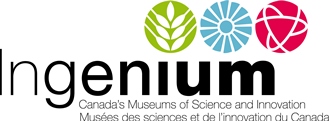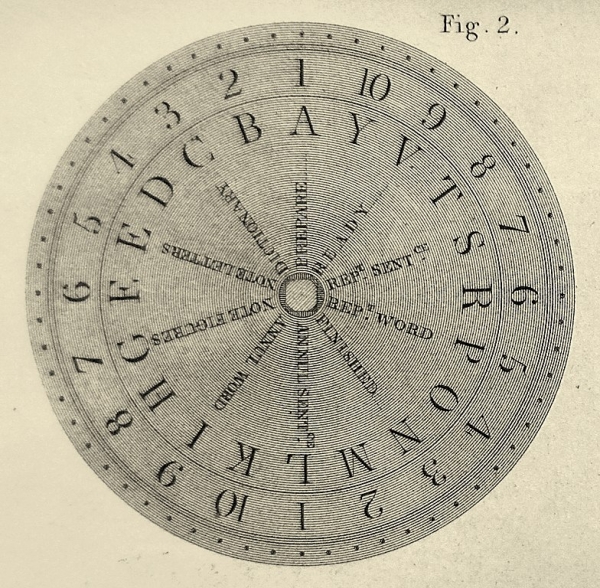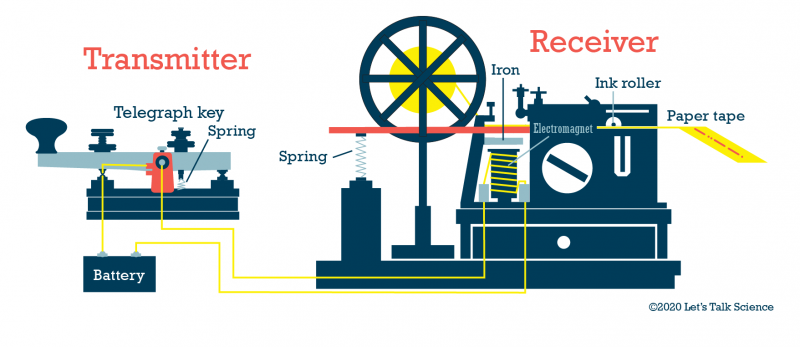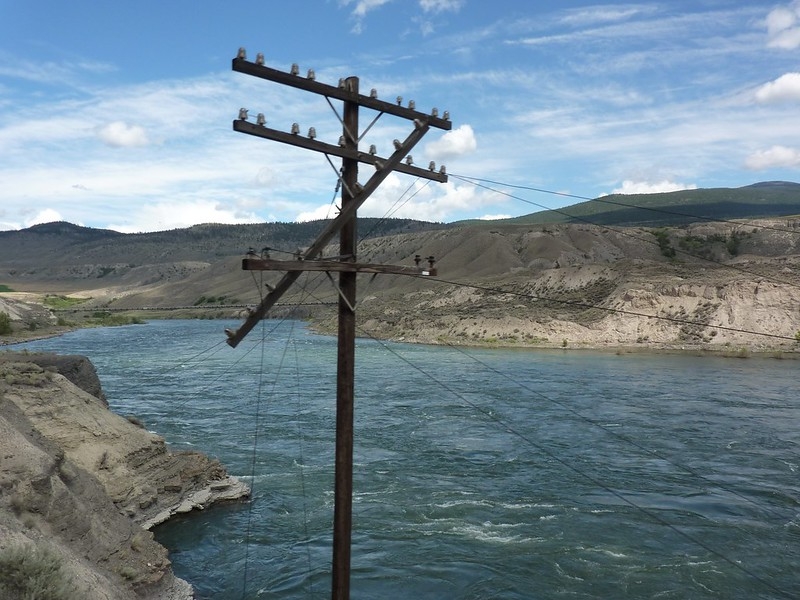Telegraph Key
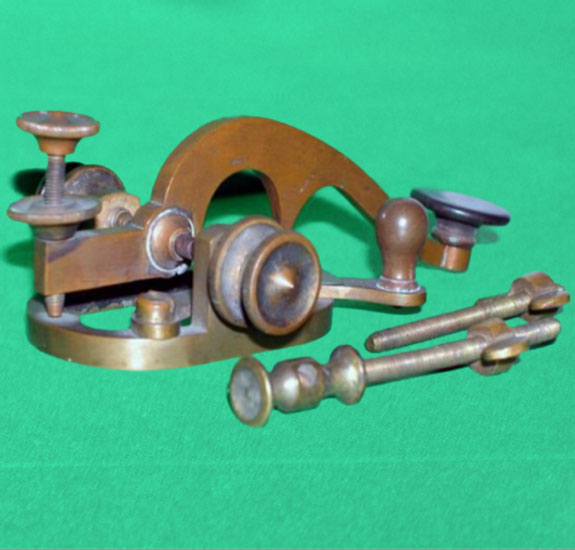
Telegraph key used in Metcalfe, Ontario telegraph office (Ingenium)

Telegraph key used in Metcalfe, Ontario telegraph office (Ingenium)
Download Links
How does this align with my curriculum?
The telegraph works by transmitting signals through an electrical circuit. Learn more and print your own telegraph key using this 3d model of a real artefact.
These activities are based on artifacts from Ingenium - Canada's Museums of Science and Innovation
Artifact no. 1975.0035.001
Learn more about this artifact
3D Educational Resources - Telegraph Key: A 3D Exploration of Electrical Transmissions
The telegraph key in the image above was used in Metcalfe, Ontario’s telegraph office. The telegraph service in Metcalfe began in 1870 and ended in 1912. To learn more about this and other artifacts at the Canadian Science and Technology Museum, visit Ingenium.
What is a telegraph?
Telegraph devices send messages, called telegrams, over long distances. The word “telegraph” comes from two Greek words. “Tele” means "at a distance and “gramma” means “letter”. When people refer to telegraphs, they usually mean electric telegraphs. But messages can also be sent long distances in other ways. For example, they can be sent with semaphore flags.
Who invented the electric telegraph?
The development of the electric telegraph occurred over time. Many scientists and engineers who were studying electricity contributed to the telegraph’s invention.
Two scientific breakthroughs were especially important influential. In 1800, Alessandro Volta invented the battery. In 1820, Hans Christian Ørsted demonstrated electromagnetism. These breakthroughs lead scientists to experiment with batteries and electromagnetism to develop a new communication system.
The first working long-distance electric telegraph was built by the English inventor Francis Ronalds in 1816. His telegraph used static electricity. His device had a line at each end. Each line connected to a revolving dial marked with the letters of the alphabet.
By 1837, English inventor William Fothergill Cooke and scientist Charles Wheatstone had patented the Cooke-Wheatstone electrical telegraph system. Cooke had devised a small telegraph device. Wheatstone had focused on sending messages over longer distances. They combined their research and created a multi-wire system that connected two train stations in England. Their telegraph used compass-like needles on a board to point to letters of the alphabet. Using 5 needles, they were able to code 20 out of the 26 letters of the alphabet.
American inventor Samuel Morse first became interested in electromagnetic communication in 1832. His early designs of an electromagnetic communication device inspired the work of Cooke and Wheatstone. By 1837, Morse, along with Alfred Vail and Leonard Gale, had patented a telegraph device. Morse's telegraph could do more than send and receive messages. It could also record the messages. The recording system pressed dots and dashes on a moving paper tape. The moving paper tape was operated by an electromagnet.
What is Morse code?
Not only did Morse help invent the telegraph, he also developed a new communication system. This system was called Morse Code. It consisted of dots and dashes. Different combinations of dots and dashes represented different letters, numbers, and punctuation. Morse Code made it possible for the telegraph system to send complex messages.
After the telegraph system was adopted in Europe, people quickly realized that Morse’s original coding system was limited to English speakers. A new version of Morse Code was devised in 1851. It is often called International Morse Code or Continental Morse Code.
The following image shows the most widely accepted version of Morse Code today.
Image - Text version
In international morse code, the length of a dot is one unit. A dash is three units. The space between parts of the same letter is one unit. The space between letters is three units. The space between words is seven units.
Did you know?
Some people used the telegraph to play chess with each other. They would send each other telegrams describing their last move.
How does a telegraph work?
A telegraph works by transmitting electrical signals over wires. A telegraph has both a transmitter and a receiver. The transmitter is the telegraph or transmission key.
Wires connect the transmitter and receiver. These wires form a series circuit. The electrical current is supplied by a battery. The knob on the telegraph key acts as a switch.
When the switch is pushed down, it makes contact with the base and closes the circuit. Electrical current can then flow to the receiver. When the knob is released, it opens the switch and the circuit.
The receiver contains an electromagnet. When the electromagnet receives a pulse of electricity, it moves an armature connected to an ink roller. The ink roller marks a strip of paper.
Why was the telegraph important?
When the telegraph was first invented, it revolutionized communication. For the first time, people from all over the world could communicate almost instantly. Think of it as old-fashioned texting!
Across Canada, telegraph lines were strung along railway tracks. This meant that the Canadian Pacific Railway offered a telegraph system. This telegraph system helped unify the country and helped people stay in touch.
Did you know?
You can still see the telegraph lines in some places when you ride the train in Canada.
Starting Points
- What is the oldest personal communication device you have ever used (e.g., rotary dial telephone, flip phone, etc.)?
- Have you ever seen a telegraph key or Morse code being used? If so, where? (e.g., in a movie, a museum display, etc.)
- Do you know the International Morse Code distress signal? (SOS or … - - - …)
- How did people get personal messages to others quickly before the invention of the telegraph? (e.g., The Pony Express, couriers, semaphore, smoke signals, etc.)
- What kind of information do you think people would send to each other over telegraph? What would the impact of quickly receiving information like this be? (e.g., news, troop movements, births, illnesses and deaths, distress calls)
- Create a timeline of personal communication devices from the telegraph to the smartphone.
- How did the telegraph transform business, trade and the news? (e.g., regional offices run by central head offices, following the stock market in real time, knowledge of shipment arrival times, news could get to people in minutes rather than hours or days, etc.).
- The Canadian Science and Technology Museum (CSTM) has several examples of telegraph keys. Go to the Collection Online database of the CSTM website and search Telegraph Key. Choose two different telegraph keys and find their common parts (knob, lever, circuit closer).
- Draw a circuit diagram for a telegraph system using correct symbols for the power source, switches, connectors, etc.
- How is a telegraph key similar to, and different from, a computer mouse?
- What are some advantages and disadvantages of telegraph systems compared to other communication technologies of the time (e.g., newspapers, sending letters by mail, etc.) in terms of cost, infrastructure, human resources, etc.?
- Which communication devices led to the end of the telegraph? (The telephone, radio).
- This artifact is missing its original spring. Locate an appropriately sized metal spring that can take the place of the elastic band in the 3D printed model.
Diagram showing the parts of a telegraph key, including the spring (Source: Public domain via Wikimedia Commons). - Diagram showing the parts of a telegraph key, including the spring (Source: Public domain via Wikimedia Commons).
- Using the STL file, modify the telegraph key so that it is more ergonomic (is more comfortable for your hand) but still workable. Have classmates try it and rate your design.
- Activity 1: Build your own telegraph key (Ingenium)
- Activity 2: What is Morse code? (Ingenium)
Connecting and Relating
- What is the oldest personal communication device you have ever used (e.g., rotary dial telephone, flip phone, etc.)?
- Have you ever seen a telegraph key or Morse code being used? If so, where? (e.g., in a movie, a museum display, etc.)
- Do you know the International Morse Code distress signal? (SOS or … - - - …)
Historical Significance
- How did people get personal messages to others quickly before the invention of the telegraph? (e.g., The Pony Express, couriers, semaphore, smoke signals, etc.)
- What kind of information do you think people would send to each other over telegraph? What would the impact of quickly receiving information like this be? (e.g., news, troop movements, births, illnesses and deaths, distress calls)
Relating Science and Technology to Society and the Environment
- Create a timeline of personal communication devices from the telegraph to the smartphone.
- How did the telegraph transform business, trade and the news? (e.g., regional offices run by central head offices, following the stock market in real time, knowledge of shipment arrival times, news could get to people in minutes rather than hours or days, etc.).
- The Canadian Science and Technology Museum (CSTM) has several examples of telegraph keys. Go to the Collection Online database of the CSTM website and search Telegraph Key. Choose two different telegraph keys and find their common parts (knob, lever, circuit closer).
Exploring Concepts
- Draw a circuit diagram for a telegraph system using correct symbols for the power source, switches, connectors, etc.
- How is a telegraph key similar to, and different from, a computer mouse?
Nature of Technology
- What are some advantages and disadvantages of telegraph systems compared to other communication technologies of the time (e.g., newspapers, sending letters by mail, etc.) in terms of cost, infrastructure, human resources, etc.?
- Which communication devices led to the end of the telegraph? (The telephone, radio).
Teaching Suggestions
- This artifact is missing its original spring. Locate an appropriately sized metal spring that can take the place of the elastic band in the 3D printed model.
Diagram showing the parts of a telegraph key, including the spring (Source: Public domain via Wikimedia Commons). - Diagram showing the parts of a telegraph key, including the spring (Source: Public domain via Wikimedia Commons).
- Using the STL file, modify the telegraph key so that it is more ergonomic (is more comfortable for your hand) but still workable. Have classmates try it and rate your design.
- Activity 1: Build your own telegraph key (Ingenium)
- Activity 2: What is Morse code? (Ingenium)
References
Bonikowsky, L. N. (2013, March 4). The first telegraph in Canada. The Canadian Encyclopedia.
Côté, O. (2015, November 4). The forerunner of text messaging: The telegraph. Canadian Museum of History.
McGillem, C. D. (2016, December 7). Telegraph. Encyclopaedia Britannica.
Ronalds, B., & Ludford, I. (n.d.). The bicentenary of the electric telegraph: The beginnings of today's world of telecommunication. Sir Francis Ronalds and his Family.
SamuelMorse.net. (2019). Samuel Morse.
